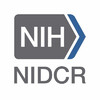
Safety and Efficacy of an Investigational Drug in Human Immunodeficiency Virus (HIV)-Infected Patients...
HIV InfectionsAcquired Immunodeficiency SyndromeThis study will investigate the safety and efficacy of different doses of an investigational drug (MK0518) as a therapy for HIV-infected patients failing current antiretroviral therapies.

Randomized Placebo-Controlled Study of Aerobic Exercise and Resistance Training Plus Megestrol Acetate...
Acquired Immunodeficiency SyndromeHIV Wasting Syndrome1 moreOBJECTIVES: I. Evaluate the effect of aerobic exercise and progressive resistance plus megestrol acetate on lean body mass of patients with human immunodeficiency virus-related weight loss (HIV-wasting). II. Evaluate whether exercise acutely alters immune function. III. Evaluate whether long-term exercise improves immunocompetence. IV. Evaluate the accuracy of multifrequency bioelectrical impedance spectral analysis in measuring body composition. V. Assess the impact of these therapies on quality of life. VI. Evaluate the effect of these therapies on the balance of energy intake and energy expenditure.

The Use of Reiki for Patients With Advanced AIDS
Acquired Immunodeficiency SyndromeHIV InfectionsThis study will investigate the use of Reiki, an energy-based complementary and alternative medicine (CAM) intervention, as an approach to improve well-being for patients with advanced AIDS, and evaluate its effects on dimensions of well-being and quality of life.

Pharmacokinetics of Nystatin LF I.V. in Patients With Acquired Immune Deficiency Syndrome-Related...
HIV InfectionsTo define the pharmacokinetic characteristics of Nystatin LF IV (intravenous) in human subjects with AIDS-related complex (ARC) after administration of a single IV dose at each of 4 dose levels.

The Antiviral Efficacy of Concurrent Zidovudine and 2',3'-Dideoxyinosine or 2',3'-Dideoxycytidine...
HIV InfectionsTo evaluate the virologic effect of combined administration of zidovudine and ddI or ddC. To evaluate the immunologic effects of zidovudine and ddI or ddC. To evaluate combined administration of zidovudine and ddI or ddC for clinical efficacy. To evaluate the safety and the tolerance of the coadministration of zidovudine and ddI or ddC.

Thalidomide to Treat Oral Lesions in HIV-Infected Patients
Acquired Immunodeficiency SyndromeBurning Mouth Syndrome1 moreThis study will test the effectiveness of topical thalidomide in healing mouth sores in HIV infected patients. Oral (PO) thalidomide heals these sores at a dose of 200 mg per day. However, PO thalidomide can cause drowsiness, skin rashes, allergic reactions, increased viral load, and even nerve damage that may not be reversible. This study will evaluate the efficacy of a topical formulation of thalidomide (placed directly on the surface of the sore) for the healing of these sores. Persons with HIV infection of acquired immunodeficiency of at least 18 years of age with one or more chronic, painful intraoral lesions may be eligible for this study. Subjects must be referred by a primary care physician who is managing their care, and must have HIV/AIDS status confirmed. Patients' HIV treatment regimen will not be altered and those receiving highly active therapy will not be excluded. Patients will be excluded if they are concurrently being treated for mucosal lesions (including topical or systemic steroids, viscous lidocaine, topical or systemic anti-fungals, or mouthwashes), or concurrent thalidomide therapy; receving chemotherapy or radiation therapy for neoplasms; using concurrent acute therapy for opportunistic infections; concurrent use of sedatives (such as CNS depressants or alcohol use); history of allergy to thalidomide; pre-existing peripheral neuropathy of grade II or higher; pregnant or lactating females or those not practicing contraception according to FDA guidelines for thalidomide.

Safety and Efficacy of Amphotericin B Lipid Complex in the Treatment of Cryptococcal Meningitis...
MeningitisCryptococcal1 moreTo evaluate the safety, tolerance and efficacy of three different dosage regimens of Amphotericin B Lipid Complex (ABLC) compared to Fungizone (Amphotericin B) in patients with AIDS and cryptococcal meningitis.

Azithromycin in the Treatment of Cryptosporidiosis in Patients With Acquired Immune Deficiency Syndrome...
CryptosporidiosisHIV InfectionsTo evaluate the safety and efficacy of azithromycin in the treatment of intestinal cryptosporidial infection in AIDS patients.

A Placebo-Controlled, Phase I, Pilot Clinical Trial to Evaluate the Safety and Immunogenicity of...
HIV InfectionsTo determine the safety and immunogenicity of Env 2-3 in combination with MTP-PE/MF59 adjuvant in adult volunteers with HIV infection. By vaccinating those who have HIV infection, perhaps the replication (reproduction) of existing viral strains can be suppressed and the asymptomatic period early in the infectious process can be prolonged. One potential way to do this is to boost HIV antigen-specific CD4 responses, which may in turn increase the effectiveness of CD8 killing of HIV infected cells.

Prophylaxis Against Tuberculosis (TB) in Patients With Human Immunodeficiency Virus (HIV) Infection...
HIV InfectionsTuberculosisTo evaluate the safety and effectiveness of a 6-month course of isoniazid ( INH ) in the prevention of clinical tuberculosis in anergic (having diminished or absent reactions to specific antigens) HIV-infected persons who are at high risk for tuberculous infection. A substantial number of HIV-infected persons are anergic, and thus do not respond to the only currently available diagnostic tool for tuberculosis infection (that is, the PPD (purified protein derivative) skin test). Many of these anergic persons are, however, infected with Mycobacterium tuberculosis and eventually develop reactivation tuberculosis, causing both individual illness and spread of infection to others in the community. This study examines the possibility of using INH prophylaxis (that is, for prevention) in anergic HIV-infected patients at high risk for tuberculosis as a means of decreasing the sharp rise in the incidence of tuberculosis due to HIV infection. INH is inexpensive and relatively safe, and thus may demonstrate an acceptable risk/benefit ratio as a medication that can be given over a limited period of time to a population suspected of having, but not proved to have, M. tuberculosis infection. If this study shows INH to be safe and effective in this setting, it could have a major effect on public health in this country.
